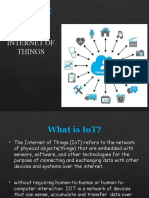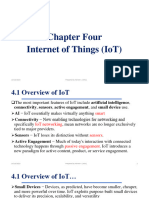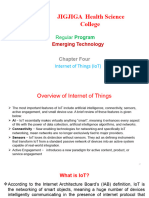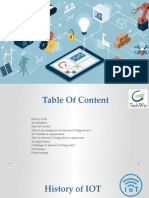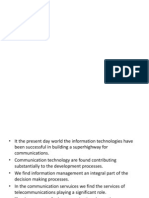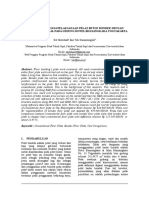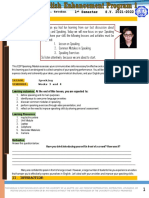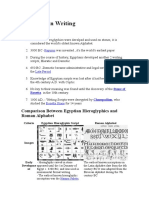0% found this document useful (0 votes)
7 views9 pagesIntroduction To IoT
The Internet of Things (IoT) connects everyday objects to the internet, enabling them to collect and share data, ultimately making life easier and smarter. IoT has evolved from early concepts in the 1980s to widespread use today, incorporating technologies like RFID and smart devices across various sectors such as healthcare, agriculture, and transportation. While IoT offers numerous advantages like efficiency and better decision-making, it also faces challenges including security issues, standardization problems, and high implementation costs.
Uploaded by
Sizz RizzCopyright
© © All Rights Reserved
We take content rights seriously. If you suspect this is your content, claim it here.
Available Formats
Download as PDF, TXT or read online on Scribd
0% found this document useful (0 votes)
7 views9 pagesIntroduction To IoT
The Internet of Things (IoT) connects everyday objects to the internet, enabling them to collect and share data, ultimately making life easier and smarter. IoT has evolved from early concepts in the 1980s to widespread use today, incorporating technologies like RFID and smart devices across various sectors such as healthcare, agriculture, and transportation. While IoT offers numerous advantages like efficiency and better decision-making, it also faces challenges including security issues, standardization problems, and high implementation costs.
Uploaded by
Sizz RizzCopyright
© © All Rights Reserved
We take content rights seriously. If you suspect this is your content, claim it here.
Available Formats
Download as PDF, TXT or read online on Scribd
/ 9















